NIN-UR.MAH.MEŠ, or the "Lady" of the Lions, was the author of two letters to the pharaoh, the King of Ancient Egypt, in the 1350–1335 BC Amarna letters correspondence. Her name is a representation of the original written script characters of Babylonian 'Sumerograms' , "NIN- + UR.MAH + (plural:MEŠ)", and means, "woman–lion–plural", namely: "Lady Lions".. The Amarna letters are mostly written in Akkadian cuneiform, with local words/phrases/etc due to various city-states or countries.

The cuneiform ru sign is found in both the 14th century BC Amarna letters and the Epic of Gilgamesh. As ru it is used for syllabic ru, and alphabetic 'r', or 'u'. In the I-XII Tablets of the Epic of Gilgamesh, it has specific uses showing alternate renderings besides ru; as sign no. 068, ru, 250 times, šub, 6, šup, 3, and as Sumerogram ŠUB, 1 time. In the Amarna letters, the sign is mostly used for ru, r, and u in the spelling of various words. Notably, for "bird", Akkadian language "iṣṣūru", in Amarna letter EA 28,, titled "Messengers Detained and a Protest"; the messengers are referenced as "uncaged" birds, and "aren't they free to come and go as birds do?".

The cuneiform qut sign, sign is found in both the 14th century BC Amarna letters and the Epic of Gilgamesh. It is a multi-use sign with 9 syllabic/alphabetic uses in the Epic of Gilgamesh; in the Amarna letters it is extremely common in the prostration formula, typical first paragraph of a letter, saying typically: "7 and 7 times,I bow down" ; a small group of Amarna letters are addressed to a different distinct personage in Egypt, under the Pharaoh.
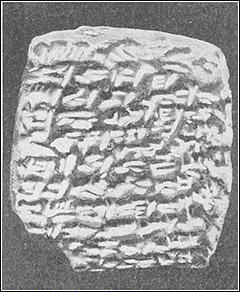
Amarna letter EA 282 is a relatively short ovate clay tablet Amarna letter, located in the British Museum, no. 29851.
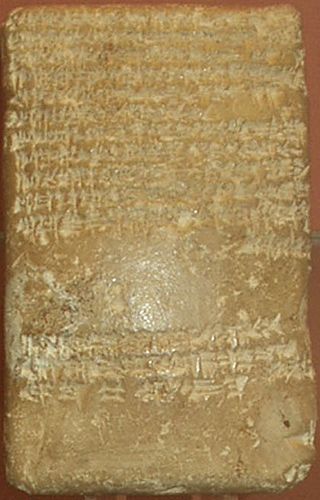
The cuneiform Ne sign, is found in both the 14th century BC Amarna letters and the Epic of Gilgamesh. In the Amarna letters, it is especially used in the opening, and introductory paragraph of the clay tablet letter, when addressing the Pharaoh (King), or when sent to another individual who is part of the Pharaoh's correspondence, for the alternate syllabic usage of "bil",. In the Amarna letters, it is used as Bil (cuneiform), for the spelling of speaks, or "says", in the opening statement; the Akkadian language word is "qabû", for to say, tell.
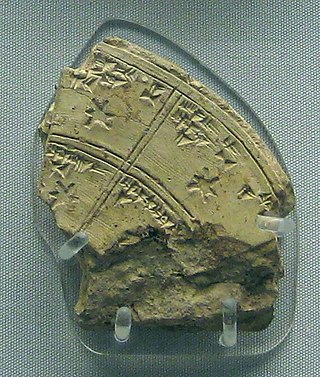
The cuneiform sign 𒀀 for a, and in the Epic of Gilgamesh the sumerogram A, Akkadian for mû, "water", which is used in the Gilgamesh flood myth, Chapter XI of the Epic, or other passages. The sign is also used extensively in the Amarna letters.

The cuneiform Ri sign, or Re, is found in both the 14th-century BC Amarna letters and the Epic of Gilgamesh; it is in the top 25 most used cuneiform signs for ri, or re, but has other syllabic or alphabetic uses, as well as the Sumerogram usage for RI.
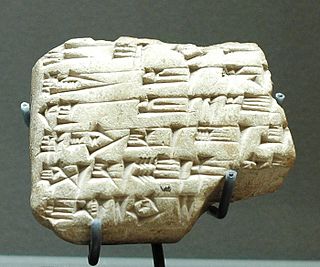
The cuneiform ia sign 𒅀, is a combined sign, containing i (cuneiform) ligatured with a (cuneiform); it has the common meaning in the suffix form -ia, for the meaning of "-mine". In the Amarna letters, the letters written to the Pharaoh of Egypt, the Pharaoh is often referenced as "Lord-mine", or especially: King-Lord-mine: "My King, My Lord". In Akkadian, the form is "Šarru-Bēlu-ia"-(King-Lord-mine), since the spelling in some Amarna letters is sometimes ŠÁR-RI for Šarru,.

Amarna letter EA 364, titled Justified War, is a clay tablet letter from Ayyab, ruler of Aštartu, to Pharaoh Akhenaten.

The cuneiform bi sign, also pí, and used for other syllabic forms, as well as a sumerogram, is a common use syllabic and alphabetic cuneiform sign used in both the mid-14th century BC Amarna letters and the Epic of Gilgamesh. In the Amarna letters, it is sometimes used for the spelling of the archers, 'pí-t(x)-t(x)', an often requested need from the Pharaoh in the vassal state sub-corpus of the letters.

The cuneiform bad, bat, be, etc. sign is a common multi-use sign in the mid 14th-century BC Amarna letters, and the Epic of Gilgamesh. In the Epic it also has 5 sumerogram uses. From Giorgio Buccellati 'comparative graphemic analysis', of 5 categories of letters, the usage numbers of the bad sign are as follows: Old Babylonian Royal letters (71), OB non-Royal letters (392), Mari letters (2108), Amarna letters (334), Ugarit letters (39).

The cuneiform sign tu, and for TU-(the Sumerogram, capital letter, in the Hittite language and other cuneiform texts, is a common-use syllabic sign for tu, and also with a syllabic use for "t", or "u". It is not a multi-use sign, with other alphabetic sub-varieties.
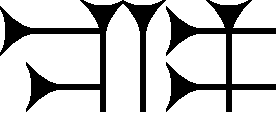
The cuneiform ta sign is a common, multi-use sign of the Epic of Gilgamesh, the 1350 BC Amarna letters, and other cuneiform texts. It also has a sumerogrammic usage for TA, for example in the Epic of Gilgamesh, for Akkadian language "ultu", English language for from, or since, but in only (1) location in the 12 tablet Epic of Gilgamesh. Sumerogram TA is used elsewhere in the Epic, (7) more times.
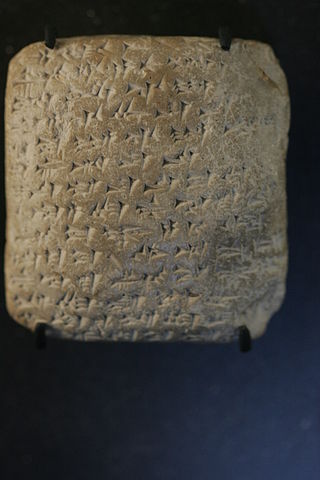
Amarna letter EA 256, in short EA 256, catalogued under the title Oaths and Denials, is one of a total of about 350 so-called Amarna letters, belonging to an official correspondence dating to the mid-14th century BC. The initial corpus of letters were found at Akhenaten's city Akhetaten, on the floor of the Bureau of Correspondence of Pharaoh; others were later found, adding to the body of letters.

The cuneiform sign za is a common use sign in the Amarna letters and the Epic of Gilgamesh. It is used syllabically for ṣa, za, and ZA, and alphabetically for "ṣ" (s), "z", or "a".

The cuneiform sign iš is a common use sign in the Amarna letters and the Epic of Gilgamesh. It is used syllabically for iš; also for mel, mil, and a Sumerogramic usage for IŠ. Alphabetically as "iš", its most common usage, it can be used for "i" or "š". In Akkadian, the four vowels a, e, i, o, are all interchangeable, and the three different "s", can also be interchanged: s, ṣ, š.

Amarna letter EA 75, titled: "Political Chaos", is a short to moderate length letter from Rib-Hadda, who wrote the largest number of Amarna letters in a sub-corpus, from the city-state of Byblos; Byblos contained an Ancient Egyptian colony, and was aligned with a few neighboring townsites.
Amarna letter EA 147, titled A Hymn to the Pharaoh, is a moderate length clay tablet Amarna letter from Abimilku of Tyre-(called Ṣurru in the Abimilku letters, and an island, until the time of Alexander the Great, 330 BC). The letter is a twin letter to EA 149, which is identical in length, and complexity, and EA 147 appears to precede EA 149.

—

Amarna letter EA 330, titled: "Dirt at the Feet of the King" is an ovate-(squarish)-shaped, small-sized letter, from Šipṭi-Ba'la the mayor/ruler of Lachish, of the mid 14th century BC Amarna letters.
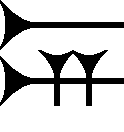

![]()
![]() .
.![]() . In EA 9 especially, there is a 'scribe margin line', both left and right on the clay tablet obverse. For the right margin, some words in the lower paragraphs of the obverse (Para 4–7), some words ending with ni/lí, have the sign lengthened, and sitting upon the right margin line-(the cuneiform text, in EA 9, reads: left-to-right).
. In EA 9 especially, there is a 'scribe margin line', both left and right on the clay tablet obverse. For the right margin, some words in the lower paragraphs of the obverse (Para 4–7), some words ending with ni/lí, have the sign lengthened, and sitting upon the right margin line-(the cuneiform text, in EA 9, reads: left-to-right).















